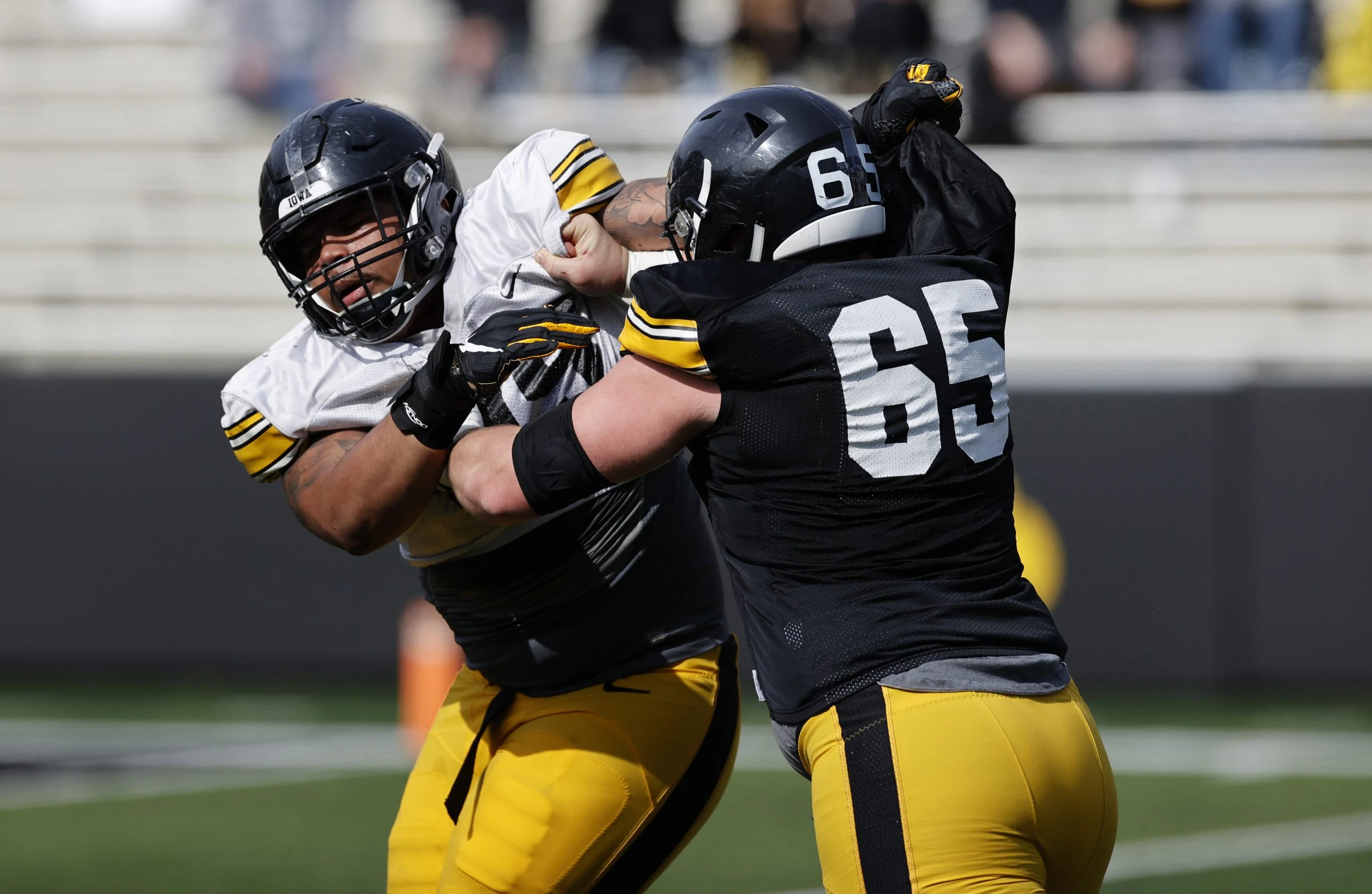Switching positions is sometimes the gateway to greatness
By Pat Harty
IOWA CITY, Iowa – In addition to being one of the top centers in college football, Tyler Linderbaum is the latest in a long and distinguished line of Iowa football players whose path to greatness started with a position change.
Linderbaum was recruited as a defensive tackle and played that position until the end of his freshman season in 2018 when he switched to center during preparation for the Outback Bowl against Mississippi State.
“He was really doing well on defense,” Iowa coach Kirk Ferentz said of Linderbaum shortly after the position switch. “What I kept coming back to is I think we really had a little bit of a void at the center position.”
Now less than three years later, Linderbaum is one of the best players in the country at his position and Ferentz looks like a genius for making the position switch.
The Iowa coaches had the vision and foresight to believe that Linderbaum had what it takes to be a force at center, while Linderbaum had the talent, toughness and work ethic to make it work.
If you were to list some of the key factors in Kirk Ferentz’s success at Iowa, position switches would have to be high on the list.
Just think of the names.

From Aaron Kampman to Dallas Clark to Eric Steinbach to Bruce Nelson to Robert Gallery to Matt Roth to Mitch King to Jonathan Babineaux to Anthony Hitchens to Riley Reiff to Marvin McNutt, the list of former Iowa players whose career skyrocketed after switching positions is impressive, and just keeps growing.
Dallas Clark came to Iowa as a walk-on linebacker under Hayden Fry and then left under Kirk Ferentz as the John Mackey Award winner in 2002 as the nation’s top collegiate tight end.
Eric Steinbach, Bruce Nelson and Robert Gallery all came to Iowa as tight ends and then left as All-America offensive linemen.
Mitch King came to Iowa as a linebacker then switched to defensive tackle where he twice made first-team All-Big Ten.
Marvin McNutt came to Iowa as a quarterback and then left as the program’s all-time leading receiver with 2,861 receiving yards.
Hayden Fry also had success with position switches during his two decades as the Iowa head coach.
One position switch that comes to mind was moving Tim Dwight from running back to receiver prior to Dwight’s sophomore year in 1995.
Dwight stood out on special teams as a true freshman in 1994, but he saw little action as a backup running back behind Sedrick Shaw, Ryan Terry and Tavian Banks.
Fry knew that he had to get Dwight on the field, and even though Dwight never had played receiver, Fry figured Dwight was talented enough to excel at that position, and Fry was right.
A head coach has to trust his instincts and his knowledge of the game when making a position switch, while the player has to trust that his head coach is making the right decision.
It’s reasonable to think that Linderbaum would’ve had success as a defensive tackle because of his talent and toughness.
But as a center, Linderbaum has a chance to be special, and one of the best to play the position at Iowa.
A move that was designed to help the team, also has changed the course of Linderbaum’s life with a career in the NFL now almost certainly waiting for the Solon native.
Position switches are more common in football compared to basketball, partly because football has more positions from which to choose.
Many times in basketball, a player is either a guard, forward or center with little flexibility.
But in football, a defensive back could grow into a linebacker, or a linebacker could shed some weight and play defensive back, or gain some weight and play defensive end, while running backs and receivers sometimes are interchangeable, as are defensive linemen, offensive linemen and tight ends.
The possibilities seem endless in football, and the challenge for a head coach is to put the best players at positions to maximize their potential.
And in the case of Tyler Linderbaum, switching to center was obviously the right move.



